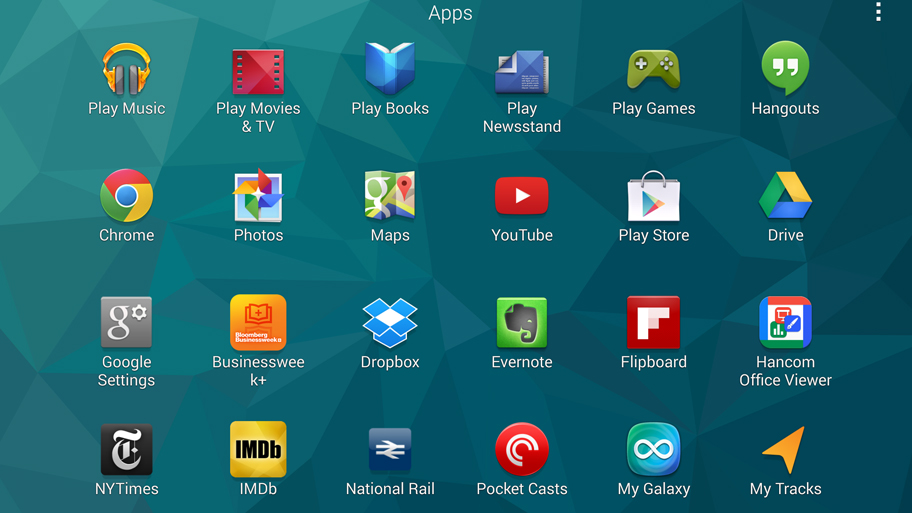Why you can trust TechRadar
Samsung's TouchWiz interface for Android continues to be bright, breezy and packed with all kinds of extra options, screens and apps — pull down the extended settings drawer and there are 19 different settings to toggle on and off, including three connectivity modes and two power-saving modes.
I prefer stock Android overall, but there's nothing major software-wise that would put me off buying a Tab S.
Taken as a whole, the Android OS still feels more awkward and clumsy on a tablet than it does on a smartphone, perhaps because many apps are simply stretched to fill the space.
The Tab S could use some dedicated tablet apps (like the best apps on the iPad) that feel more specifically configured to use the extra room.
The good news is Samsung is working with a number of vendors to create those very apps, although I doubt there will be that many in the coming months. Still, it's nice to see that the South Korean brand has noted the problem.

With so much CPU power and RAM to call upon the Tab S was able to cope very well with everything I threw at it.
Streaming a video on YouTube while browsing the web in Chrome? No problem. Listening to music and checking Facebook at the same time? Easily done.
Sign up for breaking news, reviews, opinion, top tech deals, and more.
Swipes and taps are all instantly registered no matter what app you're in and I hardly noticed any lag at all during my time with both devices.
The back of my tablet did get a little warm during extensive and heavy use, but I wouldn't say it was uncomfortable — obviously when the more powerful quad-core processor kicks into action, everything is going to heat up a little and you're going to get a more sudden drop in the battery level.
It seemed to be more noticeable on the smaller model, presumably because the components are tightly packed in.

Under the hood we have Android 4.4 KitKat and all that goes with it. If you don't like what Samsung has served up in terms of apps, then you can easily install some alternatives from Google Play (an escape route unfortunately closed off to Kindle Fire HDX tablet owners).
Geekbench 3 reported scores of 911 single-core and 2697 multi-core for the 8.4-inch Tab S and scores of 886 single-core and 2313 multi-core for its bigger brother. That means it's just about edged out in the performance stakes by the Z2 Tablet and the original iPad Air, but it's a tight race.

This is a tablet that performs as well as you would expect given its top-of-the-range components. Android 4.4 KitKat with TouchWiz is largely a pleasant experience, with the niggles that we've mentioned above, and apps are smooth and responsive.
There's still room for improvement in software terms, but there's no major black mark against the device.
If you've already nailed your colours to the mast as far as a mobile OS is concerned, I don't think the Tab S is going to change your mind one way or the other - and it's very likely to get Android Lollipop in the near future, which is good.
I get the feeling that there's very little here currently that make me believe that Samsung is going to push the Android tablet experience forward, while iOS 8(.1) has continued to extend Apple's lead as the most user-friendly UI on a tablet.
That's not to say iPads are automatically better than Android slates, but I really hope Android Lollipop combined with TouchWiz offers a lot more to tablet makers.

Dave is a freelance tech journalist who has been writing about gadgets, apps and the web for more than two decades. Based out of Stockport, England, on TechRadar you'll find him covering news, features and reviews, particularly for phones, tablets and wearables. Working to ensure our breaking news coverage is the best in the business over weekends, David also has bylines at Gizmodo, T3, PopSci and a few other places besides, as well as being many years editing the likes of PC Explorer and The Hardware Handbook.
